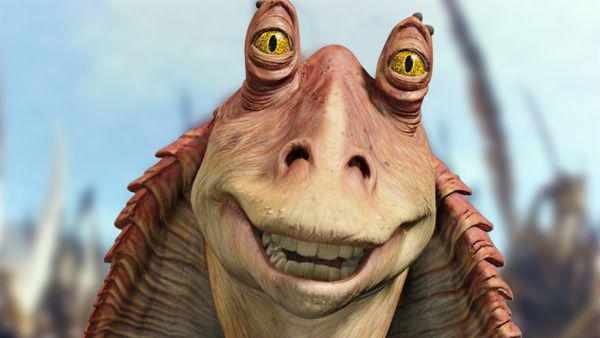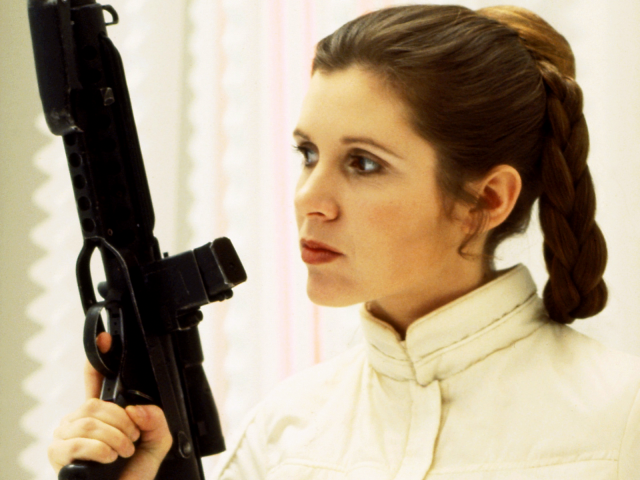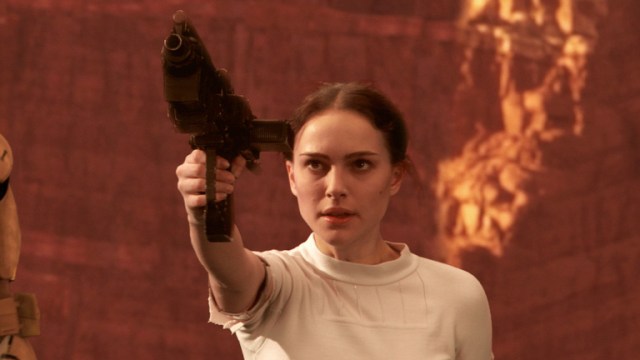Diversity in a Galaxy Far, Far Away: Star Wars’ Poor History and New Hope in Representation
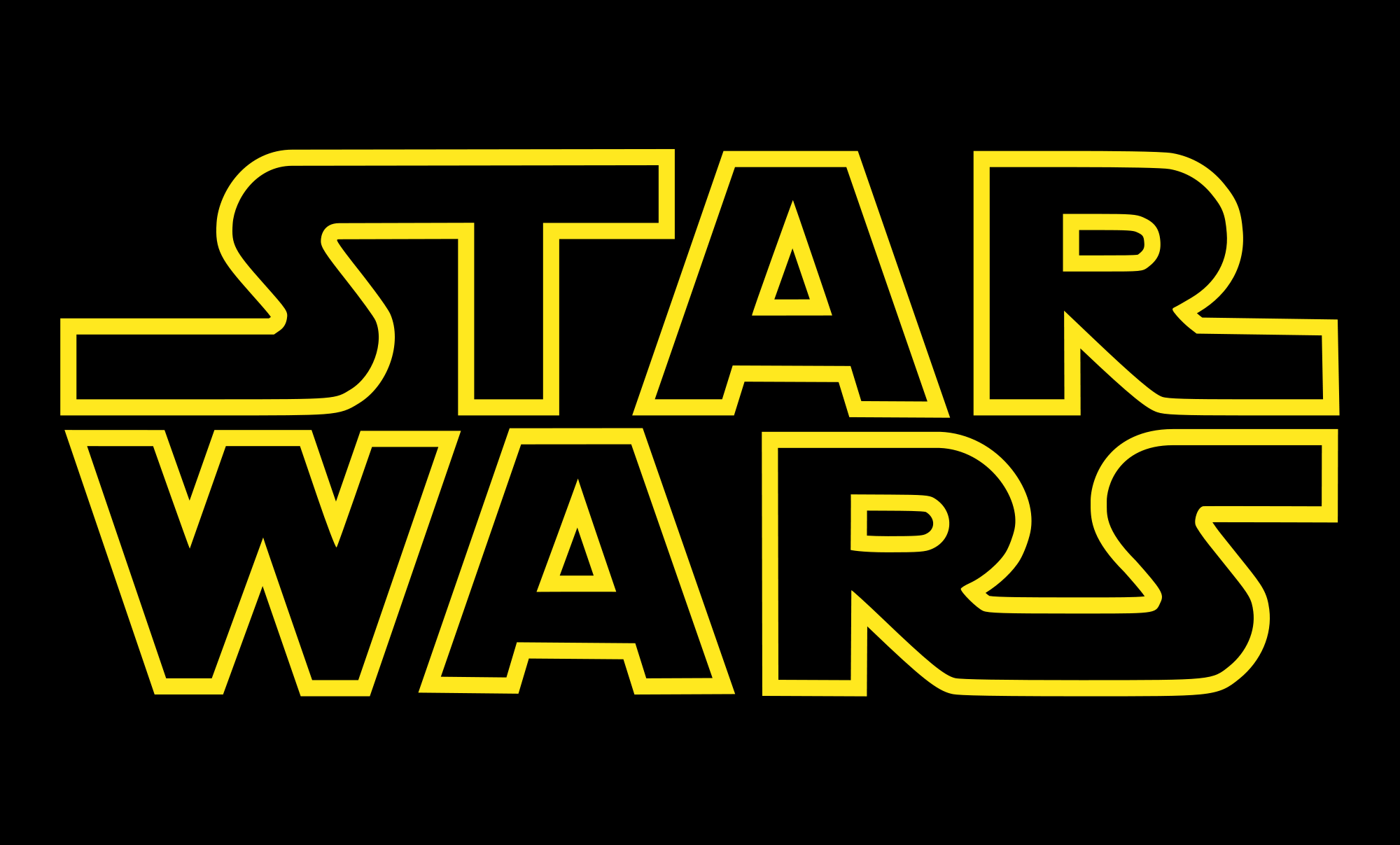
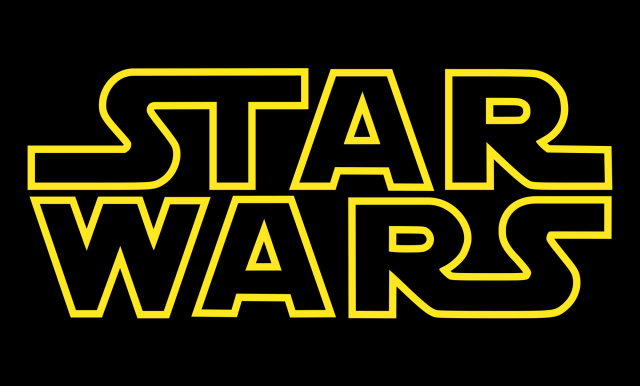
A long time ago in a galaxy far, far away…
Thus began the greatest science fiction franchise known to humankind. Star Wars reinvented the sci-fi genre and continues to exceed expectations even to this day. It showed us a universe facing problems of epic proportion: a war for democracy over dictatorship, an ancient conflict between good and evil, and a family struggling with their own unescapable destinies. And yet, even as it tried to surpass the issues of our time and weave a far more universal narrative, Star Wars failed to escape—or even address—the problems of race, gender, and representation that challenge us today.
Tatooine, a desert world indigenously inhabited by only two sentient species, is the first planet we see in the series. The humans who have now settled it are the main force for civilization on the planet, and one of the native species is little more than a racist caricature of the Bedouin and other desert nomads. Known only as the Sand People in the original trilogy, they are portrayed as brutish, “easily startled,” and lacking the skills to construct a written language.
In fact, their formal name, Tusken Raiders, comes from the fact that one of their tribes regularly raided a fort named Tusken around a hundred years before the start of A New Hope. According to Anakin Skywalker’s stepfather, they “walk like men, but they’re vicious, mindless monsters.” After butchering an entire tribe of Raiders to save his kidnapped mother, Anakin himself asserts, “They’re like animals, and I slaughtered them like animals.”
The Tusken Raiders are the second alien race we encounter in Star Wars, but they’re certainly not the only problematic caricatures. Also found on Tatooine is Watto, a shriveled up, penny-pinching slave-owner. What ethnic features did George Lucas decide to grant his greedy merchant figure? A bulbous, hooked nose, a thick, eastern European accent fresh from the shtetl, beady eyes, and disgusting protruding teeth. The Nation’s Patricia Williams described the Toydarian as reminiscent of an “anti-Semitic caricature published in Vienna at the turn of the 20th century.”
In fact, the Toydarians were only one of three racist alien species introduced in the first prequel film, The Phantom Menace. The Neimoidians head the Trade Federation and are depicted as a technologically-superior race. They seem incapable of differentiating between the ‘r’ and ‘l’ sounds, a strong Asian stereotype. However, like many stereotypes of Eastern Asian people, the Neimoidians seem to be a collage of numerous different cultures. They wear headdresses that evoke those of Chinese Emperors, but their various colony planets have Japanese-inspired names: Kato, Deko, and Koru.
Following the Neimoidians, Lucas turned his sights on one of the few ethnic groups remaining: Black people. Jar Jar Binks introduced the Gungan people to the Star Wars universe. He speaks an incredibly simplified version of English, but it’s easy to pass this off at first. After all, English (or the Star Wars equivalent), might not be his first language. When, however, Jar Jar leads the Jedi to the underwater city of the Gungans, it quickly becomes apparent that they have no native language. At this point, their simplified English, which is remarkably similar to African American Vernacular English, becomes plain racist.
In addition to their seemingly inherent inability to learn a language, the Gungans are portrayed as an incredibly backwards people. Their king is susceptible to Jedi mind tricks, which only work on the weak-minded. As well, they still use slingshots as weaponry, despite the wide availability of human weapons and their apparent mastery of complicated submarine technology.
Unfortunately, ethnic and racial stereotypes are not the only instances of marginalization in the Star Wars franchise. Sexism plays a huge role in the movies, most notably in the prequels. While Princess Leia was one of the only women in the original trilogy, at least she was still portrayed as a badass. Barking orders to her would-be rescuers and blasting away Stormtroopers with better accuracy than either Han or Luke on various occasions, Leia was a serious improvement on the typical princess of the day. Even she, however, faced objectification and sexualization by the series in Return of the Jedi, when she was infamously captured, forced into a bikini, and sexually harassed by Jabba the Hutt. But in response to that provocation, Leia eventually got her revenge by strangling the giant slug to death with a chain in a scene that the film clearly meant to play as justice long overdue.
Comparatively, Leia’s mother and grandmother—the two main women in the prequels—were a major step back. Shmi, Anakin’s mother, seems to have no purpose in the movie except to advance his plot. She has no autonomy, and apparently was not even worth returning for and saving in the ten years between The Phantom Menace and her death in Attack of the Clones. Even that death—at the hands of the barbaric Tusken Raiders, lest you forget—serves only as the catalyst for the beginning of Anakin’s turn to the dark side of the Force.
Padme is written slightly better than Shmi but also suffers from a serious lack of autonomy in all but the first movie. In The Phantom Menace, she is neither sexualized nor redundant, but in fact rules a planet. She struggles with difficult moral questions, negotiates a treaty with the Gungans, and fights off Trade Federation battle droids. Ten years later, however, she is helpless in battling the various assassins, droids, and monsters that seek to kill her. Her power as a Senator seems severely limited, and she’s taken to wearing bizarre, skintight, and revealing outfits at all times. By Revenge of the Sith, Padme is just as poorly depicted as Shmi, unable to affect change and existing—and dying—solely to serve the needs of Anakin’s character development.
Perhaps even more worrying than these sexist portrayals is the fact that I could only come up with three important women in the entire six-movie series. Indeed, representation—or the lack thereof—is a serious flaw of the Star Wars franchise. There are three important women, and only two important humans of color: Mace Windu and Lando Calrissian. The vast majority of the cast is either alien (Chewbacca, Yoda, Jar Jar, and Darth Maul) or white men (Anakin, Luke, Obi-Wan, Han, Palpatine, Qui-Gon, and Dooku.)
What does this mean for our enjoyment of a series that is otherwise well-crafted, compelling, and perhaps the greatest franchise in science fiction? Are we no longer allowed to watch Star Wars? Of course we are. The task now lies in balancing our enjoyment with a critical eye for the ways in which the movies go wrong. By keeping conscious of how these various stereotypes and issues of representation affect not just us, but also those around us, we actually do the series justice.
By acknowledging that racism and sexism don’t only manifest themselves in explicit utterances of offensive slurs, but rather permeate all levels of our society, from politicians to police officers to the media we enjoy, we end up agreeing with Obi-Wan Kenobi, one of Star Wars’ great heroes. In Return of the Sith, he says one of my favorite quotes from the series: “Only a Sith Lord deals in absolutes.” When we recognize that there are more subtle expressions of racism and sexism, we reject those absolute definitions.
But remaining silently critical is not enough. We must make sure to press Star Wars—and other producers of media, from Marvel Comics to triple-A videogame developers—for better representation, and to make amends for their past offenses. And that is exactly what the community has done, to great results in the casting of The Force Awakens.
Star Wars: The Force Awakens is set to be the seventh installment in the franchise, and like the previous movies, has a populous cast. However, of the new main characters we’ve seen so far, white men are scarce. The three main “good” characters are Finn, a former Stormtrooper played by Black actor John Boyega; Rey, a woman scavenger from the planet of Jakku played by Daisy Ridley; and Poe Dameron, a pilot for the Resistance played by Hispanic actor Oscar Isaac. The two villains are Captain Phasma, a female officer for the First Order, and Kylo Ren, a white man.
(Although it should be noted that people have expressed concern over some possible prequel-esque caricature nature peeking through with the look of Lupita Nyong’o’s CGI space pirate, Maz Kanata.)
At the end of one of the latest promotional trailers for The Force Awakens, Harrison Ford’s Han Solo flashes onscreen and says to his Wookiee companion, “Chewie, we’re home.” He’s right, and this home is better and more diverse than ever before.
Marc Daalder is a writer and student living in Massachusetts. He attends Amherst College and spends his spare time tweeting, blogging and writing fiction. He has been published in In These Times, the Financial Times, and the student publication AC Voice.
—Please make note of The Mary Sue’s general comment policy.—
Do you follow The Mary Sue on Twitter, Facebook, Tumblr, Pinterest, & Google +?
Have a tip we should know? [email protected]


